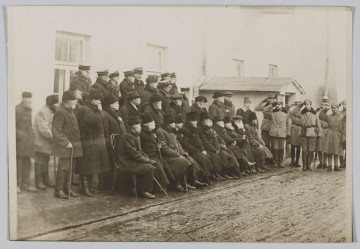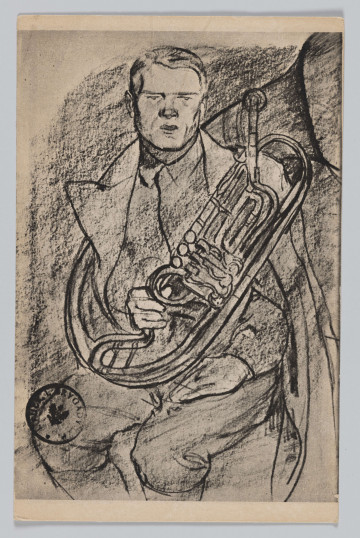
Napoleon's Hussar
National Museum in Lublin
Part of the collection: Memorabilia related to the November and January Uprisings in the Lublin Region
The colour graphics depict a sad picture of the loss of hope of Polish society after the fall of the November Uprising. The homeland is probably mourned by a father and two sons, who went together to fight for freedom. A stone column with the inscription "Finis Poloniae" marks the end of a free country.
The November Uprising was the first national liberation uprising. After its collapse, the Poles lost what little sovereignty they had left. The autonomy of the Polish Kingdom was limited, the Sejm was abolished, soldiers were conscripted into the Russian Army, Polish higher education was abolished and the administration was Russified. In 1840, the ruble was introduced as the currency of the lands under Russian rule.
In these difficult socio-political conditions, Polish iconography developed. In a way, the history of our country forced artists to touch upon historical, allegorical and genre themes, referring to the current situation of the enslaved country. It was taken up by both prominent and anonymous artists. Everyone felt obliged to honour the memory of the Homeland and its heroes. Leaflets, prints, and later postcards met the public's demand for this type of painting. They were much cheaper than oil paintings, and therefore more accessible. The illustrative message was easy to read and did not require translation. The title or commentary under the work completely explained how to interpret the scene.
Author / creator
Dimensions
cały obiekt: height: 16 cm, width: 20,5 cm
Technique
Material
paper
Creation time / dating
Creation / finding place
Owner
The National Museum in Lublin
Identification number
Location / status

National Museum in Lublin

1914 — 1918
National Museum in Lublin

1914 — 1917
National Museum in Lublin
DISCOVER this TOPIC
National Museum in Lublin
DISCOVER this PATH
Educational path